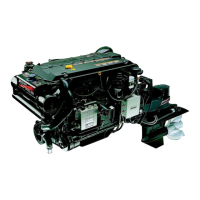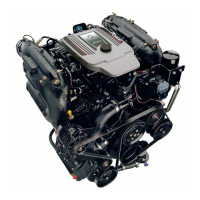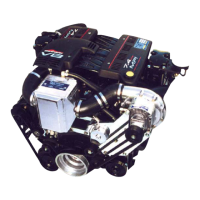TROUBLESHOOTING
SERVICE MANUAL NUMBER 22
90-860074--1 FEBRUARY 2002 Page 1C-27
Water / Coolant in Engine
Important Information
IMPORTANT: First determine location of water in engine. This information can be of
great help when trying to determine where the water came from and how it got into
the engine. The three most common problems are water on top of pistons, water in
crankcase oil, water in crankcase oil and on top of pistons.
The first step, after locating water, is to remove all the water from the engine by removing
all glow plugs or injectors and pumping cylinders out by cranking engine over. Next change
oil and filter. Now, start engine and see if problem can be duplicated. If problem can be
duplicated, there more than likely is a mechanical problem. If the problem cannot be
duplicated, the problem is either an operator error or a problem that exists only under certain
environmental conditions.
If water is contained to cylinder(s) only, it is usually entering through the intake system,
exhaust system, or head gasket.
If the water is contained to crankcase only, it is usually caused by a cracked or porous block,
a flooded bilge, or condensation.
If the water is located in both the cylinder(s) and the crankcase, it is usually caused by water
in the cylinders getting past the rings and valves, or complete submersion.
Checking for rust in the intake manifold or exhaust manifolds is a good idea. Rust in these
areas will give clues if the water entered these areas.
Water / Coolant In Crankcase Oil
Cause Special Information
1. Water in boat bilge 1. Boat has been submerged or bilge wa-
ter was high enough to run in through dip-
stick tube
2. Water seeping past piston rings or
valves
2. Refer to Water/Coolant On Top of
Pistons
3. Engine running cold 3. Defective thermostat, missing thermo-
stat; pro-longed idling in cold water
4. Intake manifold leaking near a water
passage
5. Cracked or porous casting 5. Check cylinder head, cylinder block,
and intake manifold

